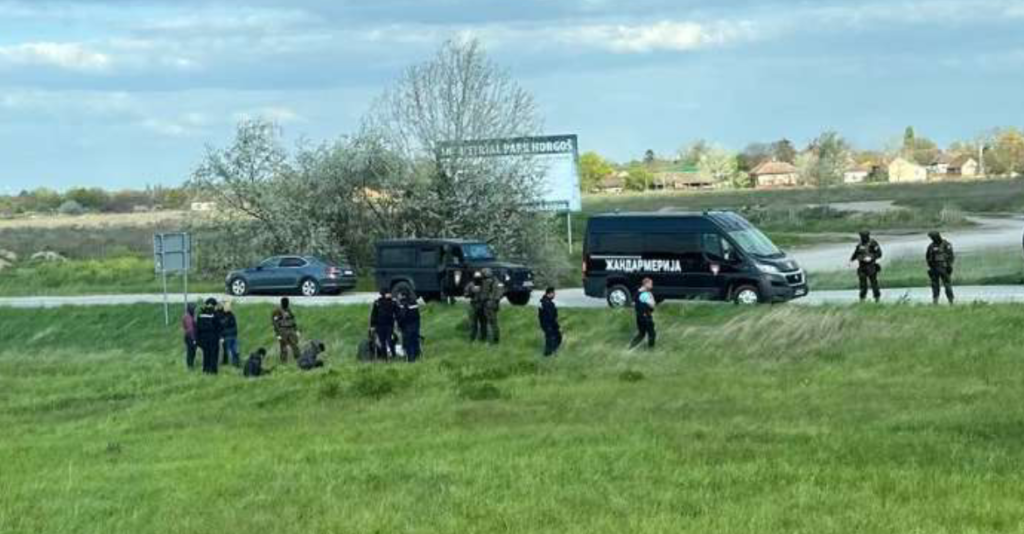
The Balkan Route has been the most travelled route by people on the move into Western Europe since 2015. Located on the European Union’s external border, Serbia has consequently become one of the biggest transit countries for people on the move from Afghanistan, Syria, and many other countries. The Serbian-Hungarian border therefore hosts thousands of people on the move every week, with numbers decreasing in Winter and increasing in Summer. Because of this, the EU is extremely focused on Serbia as a transit hotspot. Serbia’s accession into the political union is strategically used as an incentive to comply with the EU’s migration requests, as well as providing millions of Euros to support it in protecting the EU’s external borders.
Molly Broster, Medical Volunteers International
Since December 2022, the European Border and Coast Guard Agency, known as Frontex, have been present in Northern Serbia. Still to this day, their mandate and activities lack transparency, clarity and therefore accountability. There is currently over 70 Frontex personnel in the North, consisting of predominately German and Italian police officers. They are equipped with mostly German and Italian police vehicles and surveillance equipment. While their written mandate remains unclear, what is evident is is their involvement regarding Serbian police misconduct. The violation of people on the move’s rights in Northern Serbia therefore goes beyond a “Serbian problem”, and directly into the scope of the EU’s accountability and consciousness.
While the European and Serbian political framework has a direct impact on the people on the move, what physically stands between them, and the EU is two 6 metre razor-wired fences. The fences are guarded by Hungarian border forces and monitored with a range of technology. Some sections of the fence can electrocute those that touch it, while all of it requires the use of ladders to get over it. The fortification of the border has created an environment suited to smuggling networks who currently facilitate border crossings. This has created an extremely dangerous situation for people on the move in Northern Serbia, as they are left in the hands of smuggling gangs who charge them thousands of euros.

Despite Hungary’s membership to the EU and having an obligation to provide International Protection, what happens to individuals who successfully cross the fences is unimaginable. Once in Hungarian territory, people on the move are usually caught by Hungarian forces who subject them to beatings, degrading treatment, and steal all their belongings. After physically and psychologically abusing these people, the Hungarian authorities then return these people via buses back into Serbian territory. This process is called a ‘pushback’ and is regularly monitor through the Border Monitoring Violence Network who train field volunteers to take testimonies of such practices.1 Despite multiple European Court rulings, this procedure continues on a daily basis, with some individuals even being pushed back from Hungarian Hospitals.

Unfortunately, the Hungarian border fence is not the only adversity individual’s face transiting through the Balkan Route. The living conditions for people on the move residing in Northern Serbia are both oppressive and deplorable. Officially, those transiting through Serbia are required to reside in government Reception Transit Centres which are meant provide doctors, lawyers, and essential resources. However, there is vast evidence that these Centres lack all of these and are unsanitary and overcrowded. Because of this, people on the move inhabit temporary structures in abandoned buildings and forests, which are usually organised by smuggling networks close to the border. Not only does this make them vulnerable to exploitation but also the Serbian police.
Since November 2022, the Serbian police violently evict these informal living settlements. In the process of forcibly relocating people on the move, they destroy and steal people’s belongings and subject them to physical and psychological violence. People are then taken over 5 hours to the South of the country, where they are sometimes pushed back into Bulgaria or North Macedonia. Those that have enough money then have no other choice but to pay overpriced taxis to return to the North. There is evidence and testimonies of Frontex’s involvement in a number of these rights violations.2

this eviction.

Since June 2023, police brutality and control has increased dramatically. Each informal living settlement in Northern Serbia has been evicted by the Serbian Police at least once a day, with police sometimes visiting them five times per day. In addition to this increased action, the police have begun controlling taxis along the North of Serbia. Often, police stop taxis carrying people on the move and extort them of money in exchange of not being detained.

Those that are lucky enough to avoid the forced relocation, do not always escape police brutality. Often people are left with open wounds, broken bones or bruised bodies caused by Serbian police violence. Despite there being the resources for them, people on the move have extremely limited access to medical care in Serbian hospitals. This is often founded in racisms and xenophobia. Sadly, lack of access is not limited to healthcare, with many people on the move being refused entry to supermarkets and shops. This leaves people with limited options, forcing them to pay above-average prices to those exploiting their position.
With police brutality, EU funding, and Serbian oppression all increasing over the past 12 months, the future does not look hopeful for the wellbeing of people on the move transiting through the North of Serbia.
To get a more detailed reality for the situation in Northern Serbia, please read our bi-monthly advocacy reports. Here is the latest one for April/May: https://medical-volunteers.org/northern-serbia-advocacy-report-3/
https://borderviolence.eu/testimonies/
https://borderviolence.eu/app/uploads/Final-Testimonies.docx.pdf
